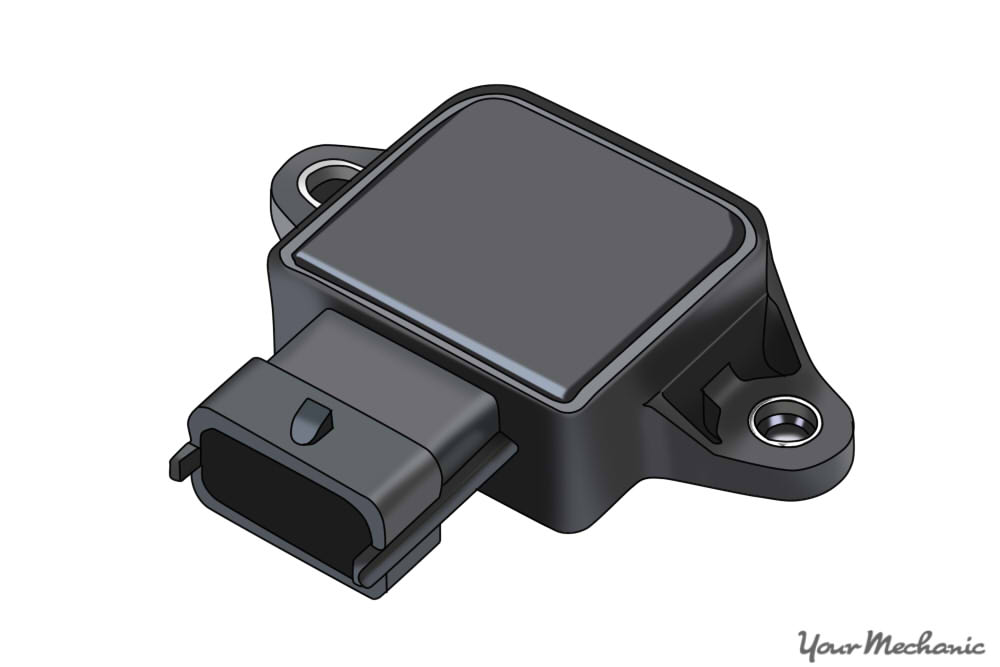

The modern, fuel-injected combustion engine depends on the efficient mixture of fuel and oxygen in order to operate. This is the task of the fuel injection system — which is topped with a throttle body and includes multiple components that assist in this process. Among the two most important parts within the throttle body are the throttle body position sensor (TPS) and the throttle body temperature sensor. While they sound similar, they are indeed two individual parts that work together to efficiently mix fuel and air.
In this article, we’ll explain the difference between a throttle body position sensor and the throttle body temperature sensor, and outline a few of the common warning signs of failure or trouble, so you’ll know when service or replacement is warranted.
What is a Throttle Position Sensor?
The throttle position sensor is a vital part of the fuel management system installed on the throttle body. Its primary job is to ensure the correct mixture of fuel and air is delivered through the fuel injection system, through the intake, and into the combustion chamber. Like any other sensor, the TPS is designed to collect data. In this case, it monitors the position of the throttle in relation to the RPM, or how fast the engine turns over. The data collected and signal it produces is sent to the ECU or ECM, which then breaks down the data to change the fuel to air mixture.
There are a few specific ways the TPS can fail — such as having a poor electrical connection, being clogged with excessive carbon deposits or other debris, or internal failure of the sensor itself. When the sensor fails it is typically a gradual issue, and when it does, it will display any of these 4 common symptoms:
- The check engine light illuminates: The check engine light is triggered when an OBD-II trouble code is created and stored in the computer. A failure or gradual failure of the TPS will send an electrical signal to the ECU and activate a code that will trigger the check engine light.
- Poor fuel economy: When the TPS is not working correctly, the air/fuel ratio will likely result in a rich condition — where more fuel is being burned than it should. This can result is more fuel consumption.
- Inconsistent engine idle: In some cases, a damaged TPS will result in an inconsistent engine idle speed that either moves too slowly or possibly stalls.
- Lack of power accelerating: It’s also common for reduced engine performance (acceleration) to occur when the TPS is damaged.
What is the Throttle Body Temperature Sensor?
The throttle body temperature sensor (sorry, it doesn’t have a cool acronym like the TPS), is also attached to the throttle body and collects data to permit an efficient burning of fuel. Specifically, it’s designed to measure the temperature of the air/fuel mixture that flows through the throttle body, into the intake manifold and eventually to the combustion chamber. The temperature of the fuel/air mixture is important because if the blend is too hot, it will vaporize quicker than it should. A colder vapor will have difficulty burning with stock ignition systems.
The sensor also measures the temperature of the throttle body itself, as this directly impacts the fuel/air mixture. It collects the data, sends to the ECU, where it adjusts the fuel/air mixture to add more fuel (to cool down) or remove fuel (to increase temperature). If it is damaged, it will produce any of these 3 symptoms:
- Poor engine performance: As explained above, the fuel/air mixture temperature is critical for efficient burning. When the sensor is damaged, it will relay inaccurate data, which can significantly reduce engine performance. You'll notice it takes more pressing on the accelerator pedal to make the car respond.
- Excessive exhaust moisture: Another smaller symptom of a damaged throttle body temperature sensor is excessive moisture coming from the exhaust system. This usually happens when the fuel mixture is too rich. This problem is also linked to failed emissions tests.
- Frequent stalling: It’s also common for the engine to stall when the throttle body temperature sensor fails.
While the throttle body position sensor and the throttle body temperature sensor both relay information to the ECU, they are quite different in their specific tasks. The TPS checks the amount of air/fuel mixture being delivered to the engine, while the throttle body temperature sensor monitors the temperature of the air/fuel mixture and the actual throttle body.
The key to properly diagnosing what is causing poor fuel efficiency, stalling, or inconsistent idling car is to have a professional mechanic come to your location to complete an onsite inspection. While each of these sensors will trigger an error code, many of these codes are linked to both components — making diagnosing simply by error code problematic.



